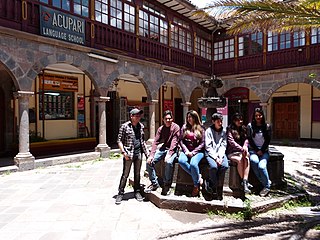 W
WThe Cultural Association ACUPARI is the responsible body of the same named language school for German, Spanish and Quechua in Cusco, Peru. The aim of this German Peruvian Cultural Association is to develop the intercultural dialogue between these two countries. For this reason ACUPARI partners with the Goethe-Institut and is a certified member of the network for language schools TANDEM International.
 W
WAguaruna is an indigenous American language of the Chicham family spoken by the Aguaruna people in Northern Peru. According to Ethnologue, based on the 2007 Census, 53,400 people out of the 55,7000 ethnic group speak Aguaruna, making up almost the entire population. It is used vigorously in all domains of life, both written and oral. It is written with the Latin script. The literacy rate in Aguaruna is 60-90%. However, there are few monolingual speakers today; nearly all speakers also speak Spanish. The school system begins with Aguaruna, and as the students progress, Spanish is gradually added. There is a positive outlook and connotation in regard to bilingualism. 50 to 75% of the Aguaruna population are literate in Spanish. A modest dictionary of the language has been published.
 W
WAmazonic Spanish, also known as Loreto-Ucayali Spanish or Jungle Spanish, is a variety of Spanish spoken in the Amazon, especially in Ecuador, parts of Colombia, Southern Venezuela and the Peruvian provinces of Loreto and Ucayali. Amazonic Spanish is also spoken in areas of Brazil adjoining Loreto and Ucayali and in the Amazonas Department of Colombia.
 W
WAncash Quechua, or Huaylay (Waylay), is a Quechua variety spoken in the Peruvian department of Ancash by approximately 1,000,000 people. Like Wanka Quechua, it belongs to Quechua I.
 W
WArawan is a family of languages spoken in western Brazil and Peru (Ucayali).
 W
WAsháninka is an Arawakan language spoken by the Asháninka people of Peru and Acre, Brazil. It is largely spoken in the Satipo Province located in the amazon forest. While there are low literacy rates in Asháninka, language use is vibrant among the Asháninka.
 W
WAymara is an Aymaran language spoken by the Aymara people of the Bolivian Andes. It is one of only a handful of Native American languages with over one million speakers. Aymara, along with Spanish, is an official language in Bolivia and Peru. It is also spoken, to a much lesser extent, by some communities in northern Chile, where it is a recognized minority language.
 W
WCandoshi-Shapra is an indigenous American language isolate, spoken by several thousand people in western South America along the Chapuli, Huitoyacu, Pastaza, and Morona river valleys. There are two dialects, Chapara and Kandoashi. It is an official language of Peru, like other native languages in the areas in which they are spoken and are the predominant language in use. Around 88.5 percent of the speakers are bilingual with Spanish. The literacy rate in Candoshi-Shapra is 10 to 30 percent and 15 to 25 percent in the second language Spanish. There is a Candoshi-Shapra dictionary, and grammar rules have been codified.
 W
WThe Catacaoan languages are an extinct family of three languages spoken in the Piura Region of Peru. The three languages in the family are:Catacao or Katakao, once spoken around the city of Catacaos Colán or Kolán, once spoken between the Piura River and Chira River Chira or Lachira or Tangarará, once spoken along the Chira River. It is unattested.
 W
WCulle, also spelled Culli, Cullí, or Kulyi, is a poorly attested extinct language of the Andean highlands of northern Peru. It is the original language of the highlands of La Libertad Region, the south of the Cajamarca Region (Cajabamba), and the north of the Ancash region. It is known through various word lists collected while the language was still spoken and through vocabulary loaned into the Spanish spoken in the region.
 W
WThe Marañón River basin, at a low point in the Andes which made it an attractive location for trade between the Inca Empire and the Amazon basin, once harbored numerous languages which have been poorly attested or not attested at all. Those of the middle reaches of the river, above the Amazon basin, were replaced in historical times by Aguaruna, a Jivaroan language from the Amazon which is still spoken there. The languages further upriver are difficult to identify, due to lack of data. The region was multilingual at the time of the Conquest, and the people largely switched to Spanish rather than to Quechua, though Quechua also expanded during Colonial times.
 W
WHarakmbut or Harakmbet is the native language of the Harakmbut people of Peru. It is spoken along the Madre de Dios and Colorado Rivers, in the pre-contact country of the people. There are two dialects that remain vital: Amarakaeri (Arakmbut) and Watipaeri (Huachipaeri), which are reported to be mutually intelligible. The relationship between speakers of the two dialects is hostile.
 W
WHuallaga Quechua is a dialect within the Alto Pativilca–Alto Marañón–Alto Huallaga dialect cluster of the Quechua languages. The dialect is spoken in the Central Huánuco region of Perú, primarily in the Huánuco Province districts of Huánuco, Churubamba, Santa María del Valle, San Francisco de Cayrán, and Conchamarca.
 W
WJaqaru (Haq'aru) is a language of the Aymaran family. It is also known as Jaqi and Aru. It is spoken in the districts of Tupe and Catahuasi in Yauyos Province, Lima Region, Peru. Most of the 2000 ethnic Jaqaru have migrated to Lima.
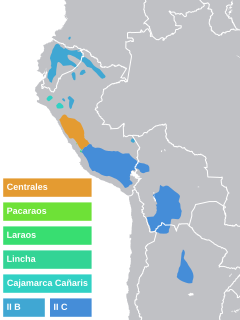 W
WKichwa is a Quechuan language that includes all Quechua varieties of Ecuador and Colombia (Inga), as well as extensions into Peru. It has an estimated half million speakers.
 W
WMatsés, also referred to as Mayoruna in Brazil, is an Indigenous language utilized by the inhabitants of the border regions of Brazil-Peru. A term that hailed from Quechua origin, Mayoruna translates in English to mayu = river; runa = people. Colonizers and missionaries during the 17th century, used this term, to make reference to the Indigenous peoples that occupied the lower Ucayali Region, Upper Solimões and Vale do Javari. Matsés communities are located along the Javari River basin of the Amazon, which draws out the boundaries between Brazil and Peru, hence the term river people. It is important to note that this term, was previously used by Jesuits to refer to inhabitants of that area, but is not formally a word in the Matsés language. The language is vigorous and is spoken by all age groups in the Matsés communities. In the Matsés communities several other Indigenous languages are also spoken by women who have been captured from neighboring tribes and some mixture of the languages occur. Dialects are Peruvian Matsés, Brazilian Matsés, and the extinct Paud Usunkid.
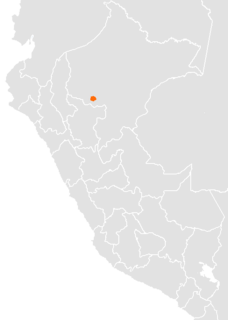 W
WMunichi is a recently extinct language which was spoken in the village of Munichis, about 10 miles (16 km) west of Yurimaguas, Loreto Region, Peru. In 1988, there were two mother-tongue speakers, but they had not met since the 1970s. The last known fluent speaker, Victoria Huancho Icahuate, died in the late 1990s. As of 2009 there were several semi-speakers who retained significant lexical, and partial grammatical, knowledge of the language.
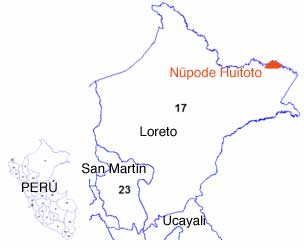 W
WNüpode Huitoto or Nɨpode is an indigenous American language spoken in western South America. It has occasionally been referred to as Muinane Witoto, not to be confused with the Muinane language.
 W
WOcaina is an indigenous American language spoken in western South America.
 W
WPeruvian Ribereño Spanish or Peruvian Coastal Spanish is the form of the Spanish language spoken in the coastal region of Peru. The Spanish spoken in Coastal Peru has four characteristic forms today: the original one, that of the inhabitants of Lima near the Pacific coast and parts south, ; the inland immigrant sociolect ; the Northern, in Trujillo, Chiclayo or Piura; and the Southern. The majority of Peruvians speak Peruvian Coast Spanish, as Peruvian Coast Spanish is the standard dialect of Spanish in Peru.
 W
WPuquina is a small, putative language family, often portrayed as a language isolate, which consists of the extinct Puquina language and Kallawaya, although it is assumed that the latter is just a remnant of the former mixed with Quechuan. The Qhapaq simi, which was spoken by the Inca elite, in contrast to the Quechuan-speaking commoners, is thought to be related, as well as the Leco isolate language. They are spoken by several native ethnic groups in the region surrounding Lake Titicaca and in the north of Chile. Puquina itself is often associated with the culture that built Tiwanaku.
 W
WQuechua I, also known as Quechua Wáywash, or Quechua B, is one of the two branches or genealogical groups of the Quechua languages. It is composed of a great diversity of linguistic varieties distributed in the mountains of central Peru, in the departments of Ancash, Huánuco, Pasco, Junín and Lima. This Quechua I differs from the Quechua II by the use of long vowels and in several morphemes. According to the linguists Torero and Carranza, they are older than Quechua II.
 W
WSouthern Quechua, or simply Quechua, is the most widely spoken of the major regional groupings of mutually intelligible dialects within the Quechua language family, with about 6.9 million speakers. It is also the most widely spoken indigenous language in the Americas. The term Southern Quechua refers to the Quechuan varieties spoken in regions of the Andes south of a line roughly east–west between the cities of Huancayo and Huancavelica in central Peru. It includes the Quechua varieties spoken in the regions of Ayacucho, Cusco and Puno in Peru, in much of Bolivia and parts of north-west Argentina. The most widely spoken varieties are Cusco, Ayacucho, Puno (Collao), and South Bolivian.
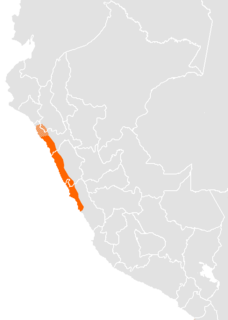 W
WThe Quingnam language was a pre-Columbian language that was spoken by the Chimú people, who lived in the former territories of the Mochicas: an area north of the Chicama Chao River Valley. At the height of Chimú conquests, the language was spoken extensively from the Jequetepeque River in the north, to the Carabayllo in the south.
 W
WShipibo is a Panoan language spoken in Peru and Brazil by approximately 26,000 speakers. Shipibo is an official language of Peru.
 W
WPeruvian Spanish is a family of dialects of the Spanish language that have been spoken in Peru since brought over by Spanish conquistadors in 1532. There are four varieties spoken in the country, by about 80% of the population. The four Peruvian dialects are Andean Spanish, Peruvian Coastal Spanish, Andean-Costal Spanish, and Amazonic Spanish.
 W
WSpanish is a Romance language that originated in the Iberian Peninsula of Europe. Today, it is a global language with nearly 500 million native speakers, mainly in the Americas and Spain. It is the world's second-most spoken native language after Mandarin Chinese, and the world's fourth-most spoken language overall after English, Mandarin Chinese, and Hindi.
 W
WTacanan is a family of languages spoken in Bolivia, with Ese’ejja also spoken in Peru. It may be related to the Panoan languages. Many of the languages are endangered.
 W
WTicuna, or Tikuna, is a language spoken by approximately 50,000 people in the Amazon Basin, including the countries of Brazil, Peru, and Colombia. It is the native language of the Ticuna people. Ticuna is generally classified as a language isolate, but may be related to the extinct Yuri language and there has been some research indicating similarities between Ticuna and Carabayo. It is a tonal language, and therefore the meaning of words with the same phonemes can vary greatly simply by changing the tone used to pronounce them.
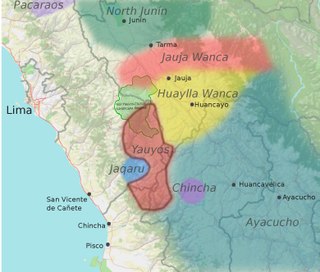 W
WYauyos–Chincha Quechua or Yauyos Quechua is a dialect cluster of Quechua, spoken in the Yauyos and Chincha districts of Peru. There are numerous dialects: in Yauyos, San Pedro de Huacarpana, Apurí, Madean-Viñac (Madeán), Azángaro-Huangáscar-Chocos (Huangáscar), Cacra-Hongos, Tomás-Alis (Alis), Huancaya-Vitis, Laraos, with similar diversity in Chincha.